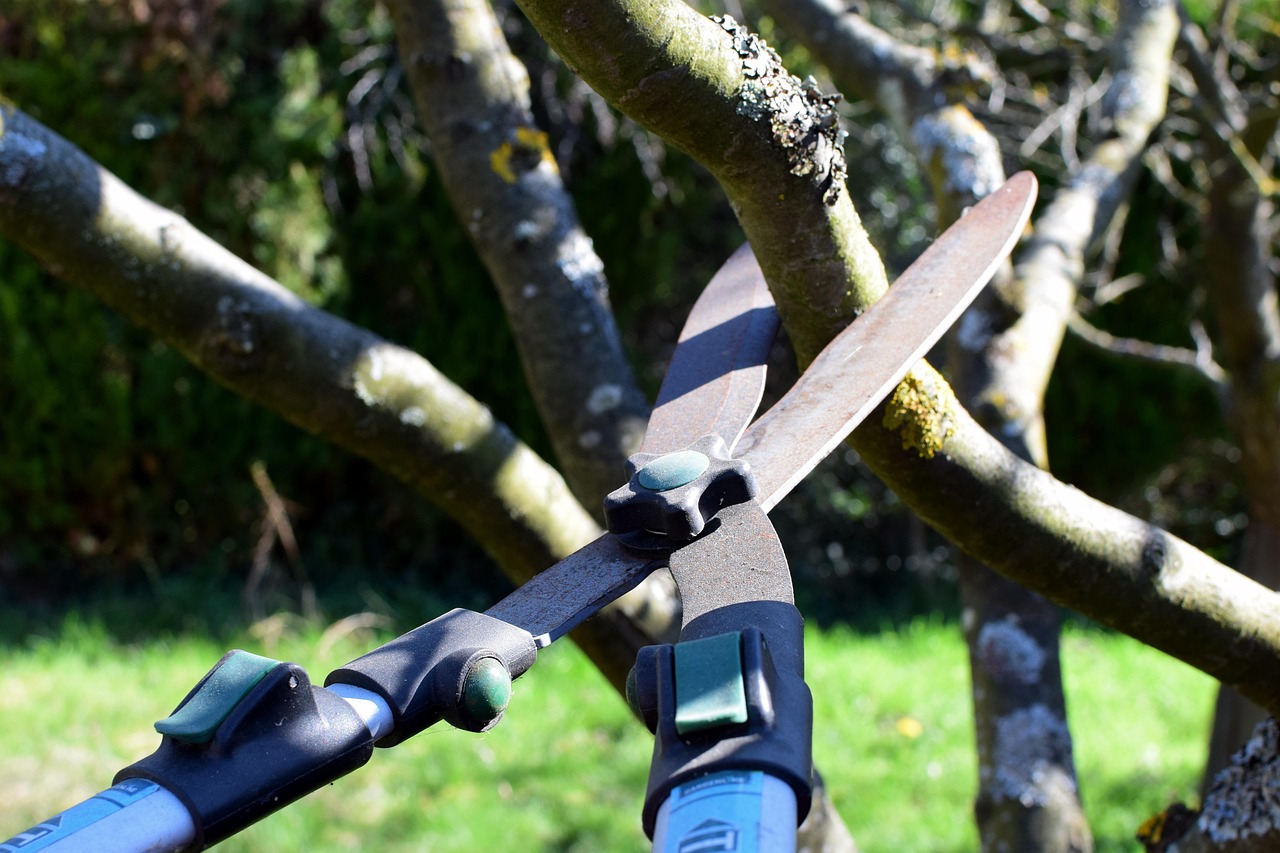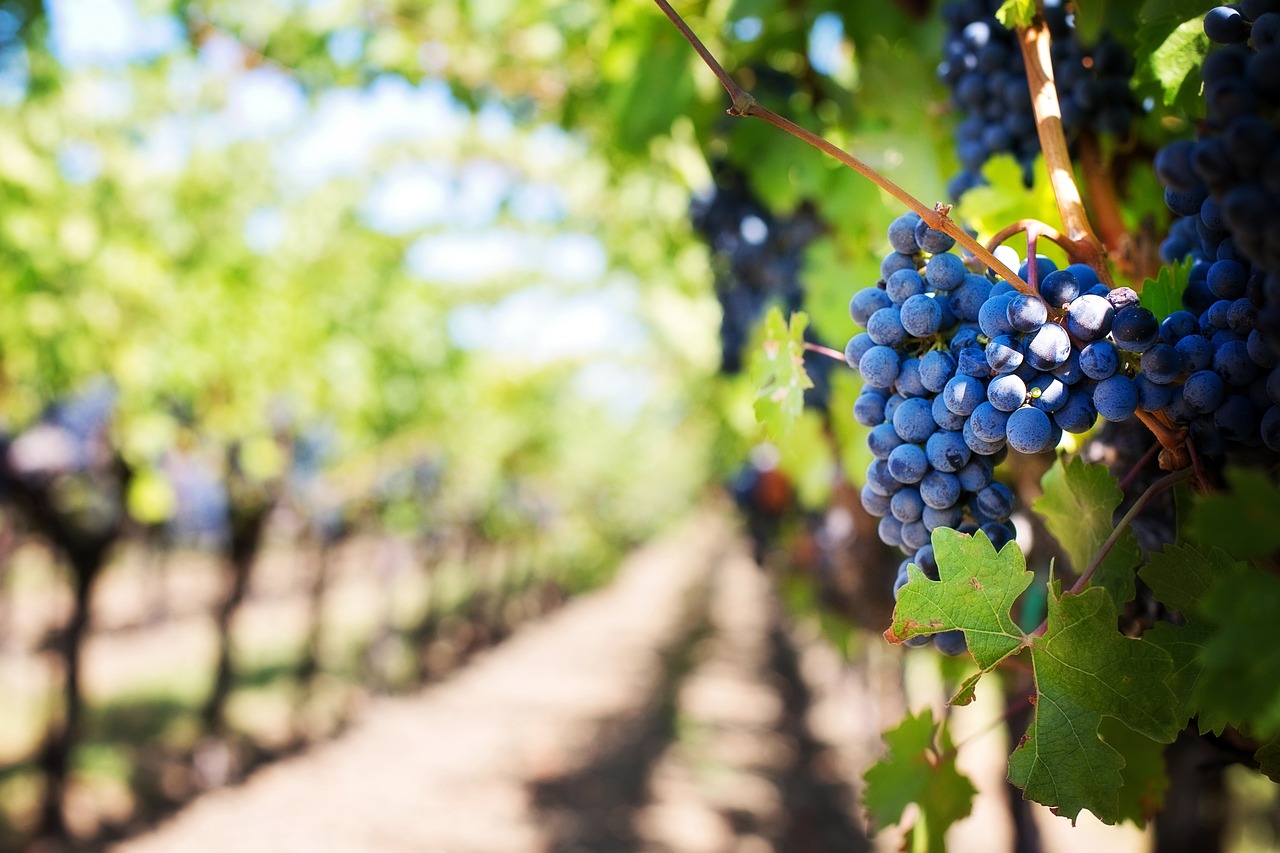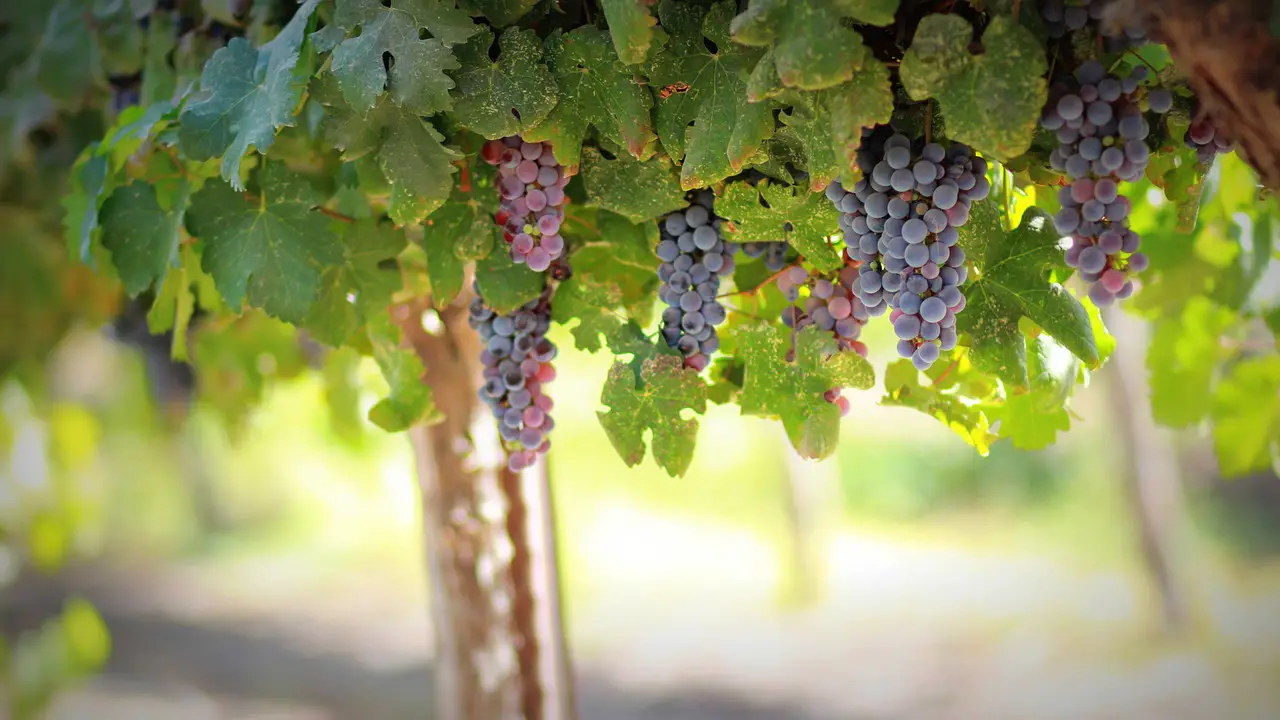Grapevine pruning is essential for producing larger grape bunches. By carefully cutting back vines, growers can increase sunlight exposure, improve air circulation, and concentrate the plant’s energy on fewer clusters. This results in healthier vines and larger, more flavorful grapes.
Grapevine pruning is a critical practice in viticulture. It not only shapes the growth of the vine but also influences the quality and quantity of grape production. Proper pruning techniques can significantly impact the performance of the vine throughout its growing season. Understanding the principles behind grapevine pruning can lead to improved yields and better-quality fruit.

Pruning is necessary for several reasons:
- Enhances air circulation and sunlight exposure.
- Removes dead or diseased wood.
- Encourages new growth by focusing energy on fewer buds.
- Shapes the vine for easier management and harvesting.
Different grape varieties may require specific pruning methods. The goal remains consistent: to optimize growth and fruit production. A well-pruned vine can produce larger bunches of grapes, which are not only more visually appealing but also more desirable for winemaking.
Understanding Grapevine Growth
To effectively prune grapevines, it is crucial to understand their growth cycle. Grapevines are perennials that go through a process of dormancy and active growth each year. During the winter months, vines are dormant, and this is the ideal time for pruning. As spring arrives, the vines begin to grow new shoots, which will eventually bear fruit.

The growth cycle can be broken down into several stages:
- Dormancy: During winter, vines lose their leaves and become inactive.
- Budding: In early spring, buds swell and begin to open.
- Flowering: As buds develop into shoots, flowers bloom in late spring.
- Fruit Set: Flowers turn into small grape berries over a few weeks.
- Maturation: Grapes grow and ripen throughout summer into fall.
Understanding this cycle helps grape growers determine when and how to prune effectively. Pruning during dormancy allows for a clean start in the spring. It sets the stage for healthy growth and optimal fruit production. Without proper timing, growers risk damaging the vine or reducing potential yields.
Types of Pruning Methods
There are several pruning methods used in viticulture, each with its unique advantages. The choice of method often depends on the grape variety and desired outcome. Here are some common pruning techniques:

| Pruning Method | Description | Benefits |
|---|---|---|
| Cane Pruning | This method involves selecting one or two canes from the previous year’s growth to keep for fruiting. | Encourages higher quality grapes with good sunlight exposure. |
| Sucker Removal | Suckers are unwanted shoots that grow from the base of the vine or on the trunk. | Helps focus energy on fruit-bearing canes. |
| Head Pruning | This involves cutting back the vine to a short trunk with multiple buds at the top. | Suitable for certain varieties; fosters easier management and harvesting. |
| Renewal Pruning | This technique removes old wood to encourage new growth from younger canes. | Promotes healthy vine structure and fruit production over time. |
Understanding these methods allows growers to select the most appropriate technique for their vineyard conditions. Effective pruning helps manage vine vigor and ensures that energy is directed toward producing larger grape bunches.
In addition to choosing a pruning method, timing is also crucial. Pruning too late in the season can disrupt new growth, while pruning too early can expose vulnerable buds to frost damage. Therefore, it is essential to monitor weather patterns and adjust pruning schedules accordingly.
By mastering the art of grapevine pruning, growers can achieve a balance between vine health and fruit production. This balance is key to producing larger bunches of grapes, ultimately contributing to better wine quality and increased profitability in their vineyards.

In summary, effective grapevine pruning techniques are vital for maximizing yield and improving grape quality. Understanding vine growth cycles, selecting appropriate pruning methods, and timing can lead to successful outcomes in grape production.
Common Mistakes in Grapevine Pruning
While pruning is essential for producing larger grape bunches, many growers make common mistakes that can negatively impact their vines. Understanding these pitfalls can help in achieving better results. Here are some frequent errors to avoid:
- Incorrect Timing: Pruning too late in the season can harm new growth, while early pruning may expose buds to frost.
- Over-Pruning: Removing too many buds or canes reduces potential fruit production and weakens the vine.
- Ignoring Vine Health: Failing to assess the health of the vine before pruning can lead to further issues, such as disease spread.
- Improper Tools: Using dull or inappropriate tools may cause damage to the vine and make the pruning process inefficient.
Avoiding these mistakes requires attention to detail and knowledge of each vine’s specific needs. Regular observation and care can significantly improve pruning outcomes.
The Role of Training Systems in Pruning
Training systems are crucial in managing grapevine growth and determining how pruning will affect fruit quality. Different training systems create various shapes and structures for the vine. These systems impact airflow, sunlight exposure, and ease of harvesting. Below are some widely used training systems in viticulture:
- Cordon Training: This system involves training the vine along a horizontal wire. It encourages fruiting on lateral shoots.
- Vertical Shoot Positioning (VSP): Vines are trained upward with shoots positioned vertically. This maximizes sunlight exposure and air circulation.
- Guyot Training: This technique involves selecting one or two canes from the previous year for fruiting while removing the rest.
- Soustons Training: Vines are allowed to grow freely with minimal intervention. This method is less common but can produce unique grape characteristics.
The choice of training system directly influences how the vine will respond to pruning. For example, VSP may require more precise pruning to maintain vertical growth, while cordon training might allow for a more forgiving approach.
Understanding Vine Vigor and Its Impact on Pruning
Vine vigor refers to the growth strength and overall health of the grapevine. It plays a significant role in how grapes develop and how they should be pruned. High vigor can lead to excessive foliage, which may overshadow grape clusters, impacting fruit quality. Conversely, low vigor can result in smaller yields. Here are some factors affecting vine vigor:
- Soil Quality: Nutrient-rich soils promote healthy vine growth. Poor soil can limit vigor and produce smaller grapes.
- Water Availability: Adequate water supply is crucial for maintaining vine health and promoting strong growth.
- Climate Conditions: Temperature and sunlight affect photosynthesis, influencing overall vine vigor.
- Pest and Disease Management: Healthy vines are less susceptible to diseases, which can hinder growth.
A thorough understanding of these factors allows growers to make informed decisions on pruning techniques tailored to their vine’s vigor levels. Adjustments in pruning can enhance fruit quality by ensuring that vines are neither overburdened nor underperforming.
The Importance of Post-Pruning Care
After pruning, proper care ensures the continued health of the vine. This stage is often overlooked but is vital for successful grape production. Key post-pruning practices include:
- Monitoring Growth: Observing new shoot development helps indicate the effectiveness of pruning efforts.
- Applying Fertilizers: Providing nutrients post-pruning supports robust new growth and fruit development.
- Irrigation Management: Ensuring vines receive adequate water helps them recover from pruning stress.
- Pest Control: Keeping an eye out for pests that may exploit weakened vines during recovery is crucial.
Implementing these practices helps maintain vine vitality and lays the foundation for larger grape bunches later in the season.
The Influence of Grape Variety on Pruning Techniques
Different grape varieties exhibit unique growth habits and characteristics, necessitating specific pruning approaches. Understanding these differences is essential for optimizing grape production. Below are examples of how grape variety influences pruning:
| Grape Variety | Typical Growth Habit | Recommended Pruning Method |
|---|---|---|
| Chardonnay | Cylindrical growth with moderate vigor | Cane pruning to ensure quality and balance |
| Cabernet Sauvignon | High vigor with sprawling growth | Cordon or VSP for better sunlight exposure |
| Sauvignon Blanc | Moderate vigor with compact clusters | Sucker removal and cane pruning for optimal yield |
| Zinfandel | Tends to grow vigorously with dense foliage | Head pruning to manage canopy growth |
Selecting the correct pruning method based on grape variety allows for maximizing fruit quality and achieving larger bunches. Each variety’s unique traits require tailored approaches for effective management throughout the growing season.
Seasonal Considerations for Grapevine Pruning
Pruning grapes is not just an annual task; it requires a seasonal approach to ensure the best results. Different times of the year bring specific challenges and opportunities for vine management. Understanding these seasonal considerations can enhance the effectiveness of pruning and overall vine health.
Winter Pruning
Winter is the primary season for grapevine pruning. During this time, vines are dormant, making it easier to identify the structure and health of each vine. The benefits of winter pruning include:
- Ease of Access: With no foliage, it is easier to see the vine’s framework.
- Reduced Stress: Pruning during dormancy minimizes stress on the plant.
- Better Air Circulation: Removing excess wood allows for improved airflow in the canopy.
Growers should aim to finish winter pruning before buds begin to swell in early spring. Timing is crucial, as pruning too late can lead to frost damage on newly exposed buds.
Spring Management
As spring arrives and vines awaken, the focus shifts from pruning to managing new growth. During this period, growers should:
- Monitor Bud Development: Watch for signs of growth and adjust management practices accordingly.
- Remove Suckers: Suckers that grow from the base of the vine can detract from fruit production and should be removed promptly.
- Thin Excess Shoots: If multiple shoots arise from a single bud, thinning can help concentrate energy on fewer clusters.
This proactive management during spring can set a solid foundation for larger grape bunches later in the season.
Summer Care
Summer presents unique challenges as vines grow vigorously. While pruning is less common in this season, other practices are essential to ensure healthy development:
- Canopy Management: Regularly adjust and position shoots to optimize sunlight exposure and airflow.
- Water Management: Ensure consistent irrigation, particularly during dry spells, to support berry development.
- Pest Control: Vigilantly monitor for pests and diseases that can threaten vine health during active growth.
Maintaining vigilance during summer helps prevent issues that could affect fruit quality and yield.
Harvest Season Considerations
As harvest approaches, final adjustments might be needed based on crop load and vine health. Key tasks include:
- Assessing Ripeness: Monitor sugar levels and berry development to determine the optimal harvest time.
- Culling Poor Quality Bunches: Remove any diseased or underdeveloped grape clusters to enhance overall quality.
This attention to detail ensures that only the best fruit is harvested, ultimately leading to higher-quality wine production.
The Benefits of Precision Pruning
Precision pruning refers to the careful and intentional selection of which buds or canes to keep on the vine. This method can yield numerous advantages for grape quality and vine health:
- Improved Quality: By focusing on fewer buds, the vine can channel more resources into producing larger, more flavorful grapes.
- Better Sunlight Exposure: Targeted pruning allows for optimal light penetration, which is essential for ripening fruit.
- Enhanced Airflow: Reduced foliage helps minimize the risk of mold and disease, leading to healthier grapes.
Implementing precision pruning techniques requires skill and experience but pays off with improved yields and higher grape quality.
Tools and Techniques for Effective Pruning
The right tools are crucial for successful grapevine pruning. Using appropriate equipment not only makes the task easier but also helps avoid injury to the vine. Common tools include:
| Tool | Description | Best Use |
|---|---|---|
| Bypass Pruners | A hand tool with two blades that pass by each other. | Ideal for cutting small branches and thin canes. |
| Loppers | A larger tool designed for cutting thicker branches. | Useful for removing larger canes during winter pruning. |
| Saws | A hand saw or pruning saw for substantial cuts. | Necessary for very thick wood or older vines. |
| Gloves | Padded gloves protect hands from thorny vines. | Essential for safety when handling vines. |
Using sharp tools ensures clean cuts, which are less likely to result in damage or disease transmission. Proper maintenance of tools also enhances their lifespan and effectiveness.
The Role of Soil Management in Pruning Outcomes
The health of the soil directly impacts vine growth and fruit production. Managing soil quality through various practices can lead to better results after pruning:
- Nutrient Management: Regular soil tests help identify nutrient deficiencies that can affect vine vigor and grape quality.
- Cover Cropping: Planting cover crops between rows can improve soil structure, enhance biodiversity, and prevent erosion.
- Irrigation Practices: Efficient water management ensures that vines receive adequate moisture without over-saturating the soil.
A holistic approach to soil management supports healthy vines and can significantly enhance the results of pruning efforts. Healthy soil leads to vibrant growth, contributing to larger grape bunches and improved wine quality.
Final Considerations for Successful Grapevine Pruning
In addition to understanding the impact of soil management on grapevine health, there are several other considerations that can enhance the effectiveness of pruning practices. These considerations can lead to producing larger grape bunches and improving overall vineyard productivity.
Understanding Vineyard Microclimates
Vineyards often have varying microclimates, which can significantly affect vine behavior and grape development. Factors such as elevation, exposure to sunlight, and wind patterns contribute to these microclimates. Understanding the specific microclimate in different sections of the vineyard allows growers to tailor their pruning strategies accordingly.
- Sun Exposure: Vines in sunnier areas may require different pruning techniques than those in shaded regions. Ensuring adequate light exposure to fruiting zones can maximize grape size and quality.
- Wind Protection: Areas prone to harsh winds may need more robust training systems and pruning techniques to protect delicate shoots and bunches.
- Soil Variability: Soil composition can differ within a vineyard, affecting how much water and nutrients are available. Adjusting pruning practices in response to soil conditions can optimize growth.
By considering these microclimatic factors, growers can enhance their pruning methods to better suit their specific vineyard environment.
Integrating Technology in Vineyard Management
Advancements in technology have revolutionized vineyard management. Utilizing tools such as drones, soil sensors, and data analytics software can provide valuable insights into vine health and growth patterns. Here are some ways technology can aid in pruning practices:
- Drones: Drones can survey vineyards and assess vine health from above, identifying areas that may require different pruning or management strategies.
- Soil Sensors: Real-time soil moisture sensors help determine the precise irrigation needs of vines, which is critical for health post-pruning.
- Data Analytics: Analyzing historical data about weather patterns, soil conditions, and vine growth can inform better decision-making around pruning schedules and methods.
Integrating these technologies into vineyard operations not only enhances efficiency but also supports informed decision-making throughout the growing season.
The Significance of Continuous Learning and Adaptation
The field of viticulture is always evolving. Continuous learning through workshops, seminars, and industry publications helps growers stay informed about new techniques and trends in grapevine management. Networking with other growers can also provide valuable insights into effective pruning strategies. Adaptation is key:
- Experimentation: Trying out new pruning techniques or methods can lead to discovering what works best in a specific vineyard environment.
- Feedback Loops: Gathering feedback on harvest quality and yield post-pruning allows for refining techniques over time.
- Research Participation: Engaging in research projects or trials can provide firsthand experience with innovative practices.
A willingness to adapt and learn is essential for long-term success and sustainability in grape production.
Conclusion
Grapevine pruning is a fundamental practice that plays a vital role in producing larger, high-quality grape bunches. By understanding the various aspects of pruning—from timing and techniques to soil management and technology integration—growers can significantly enhance their vineyard’s productivity and fruit quality. Each vineyard presents unique challenges, requiring tailored approaches based on specific conditions and grape varieties.
The journey to mastering grapevine pruning involves ongoing education, careful observation, and a commitment to best practices. With the right knowledge and dedication, growers can successfully navigate the complexities of viticulture, ultimately resulting in thriving vines and exceptional wines. Embracing these principles will lead to fruitful harvests and contribute to the long-term viability of vineyards across the globe.
